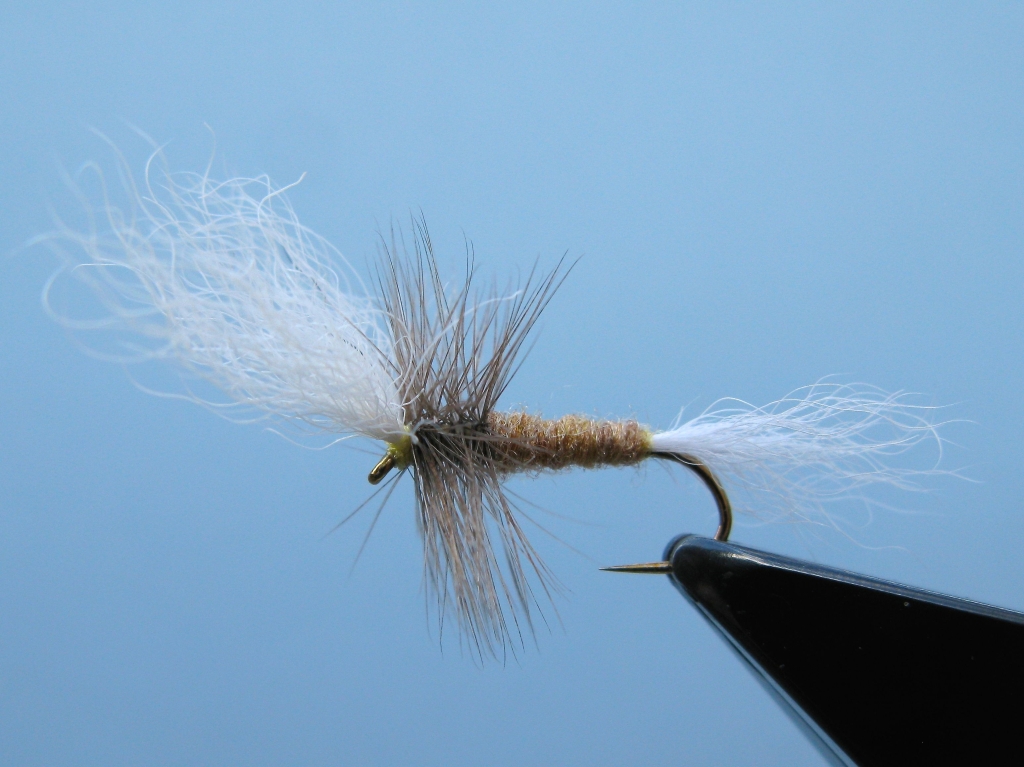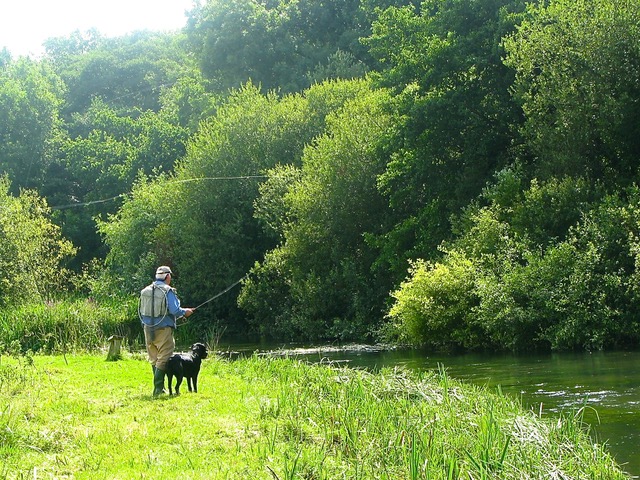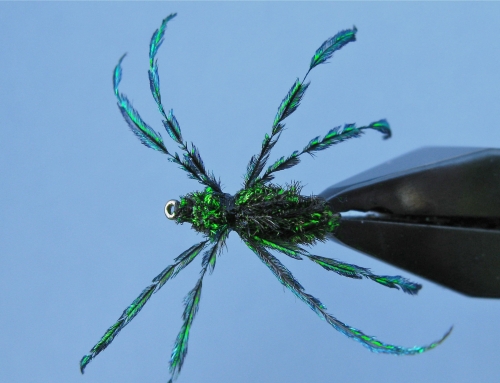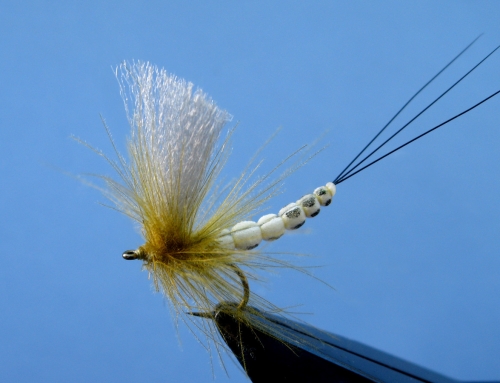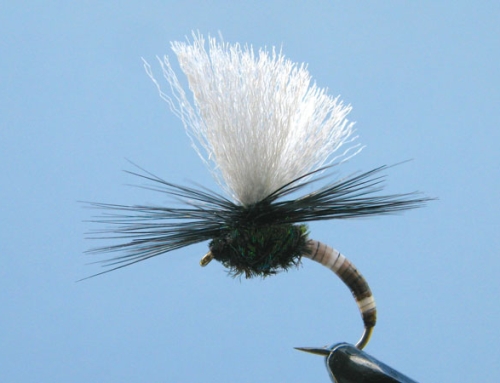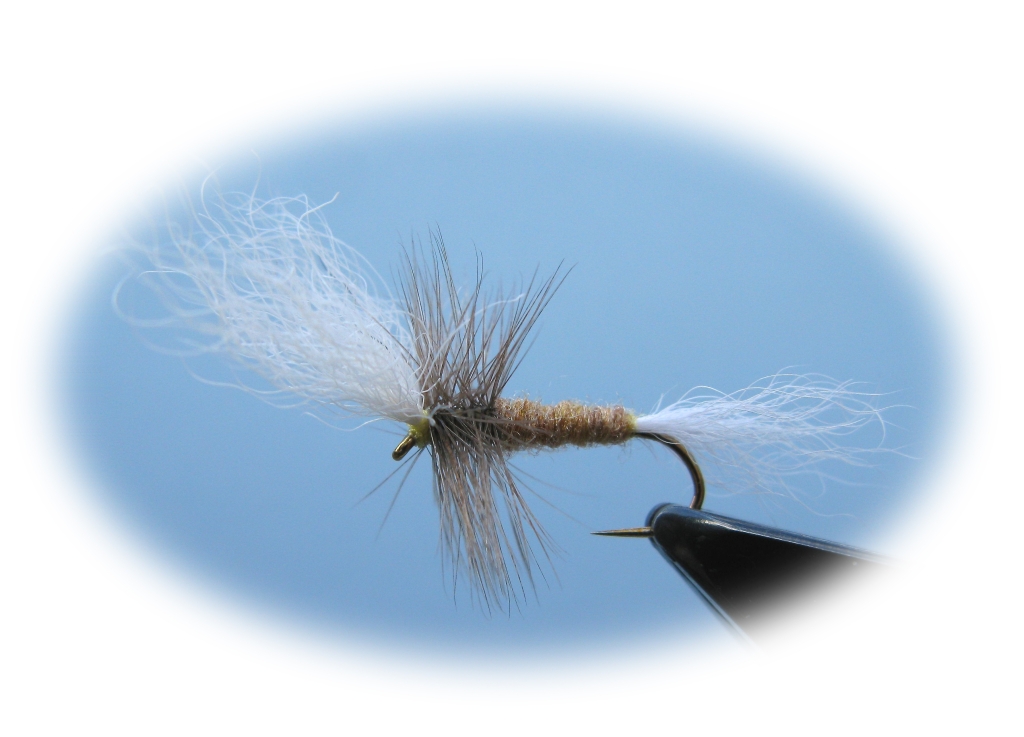
The Hairy Hotchkiss
When you get to my advanced years you don’t always welcome unexpected phone calls. This was most certainly the case when I was told a few years ago that my dear friend John ‘The Hotch’ Hotchkiss had passed away.
John had been a good friend and mentor to me for over 30 years. We first spent time together when he was producing the television series ‘The Take’ and asked me to be the ‘warm and friendly’ voiceover! Before each session we would meet in the local café for breakfast. I had just started my all-consuming affair with flytying and spent every spare moment at the vice. On one occasion I proudly showed him a large box with the best of my recent work. He looked over the contents for a while and as he handed them back said “Nice but a bit too neat!” I still tie neat flies but have to admit that many of them seem to be more effective once they’ve had a good battering from a couple of fish!
Without doubt our most memorable day together was on the River Itchen during the Mayfly. Before we started he took me to one side and introduced me to his ‘go to’ Mayfly pattern ‘The Hairy Hotchkiss’!
He said ‘I’ve been fishing this pattern for more years than I care to remember…heaven knows where it came from, but the scruffier it gets the better it works!’
How right he was! I lost count of the fish I caught that day and since then I’ve always kept a few in the Mayfly box. A few years later I asked if I could use the pattern in my column in ‘Fly Fishing and Fly Tying’ Magazine. He said ‘Why not…it’s been a bit of a secret over the years but maybe it’s time to unleash it on the general public!’
To tie ‘The Hairy Hotchkiss’ you will need:
Hook: Kamasan B 170 Size 10.
Thread: Veevus 8/0.
Wing and Tail: Calf Tail.
Body: Flyrite Pale Ginger or similar.
Hackle: Blue Dun.
Step One
Mount the hook in the vice and run the thread a short distance down the hook and then back again to the eye. For wings select a clump of calf tail about the length of the hook shank and tie in, points over and hard up against the eye.
Make securing turns of thread working towards the bend before cutting the butts of the calf tail at an angle to form a tapered body.
Before dividing the wing take several turns of thread under the wing and behind the eye, forcing the wings into an upright position and then divide the wing in equal parts with figure of eight wraps.
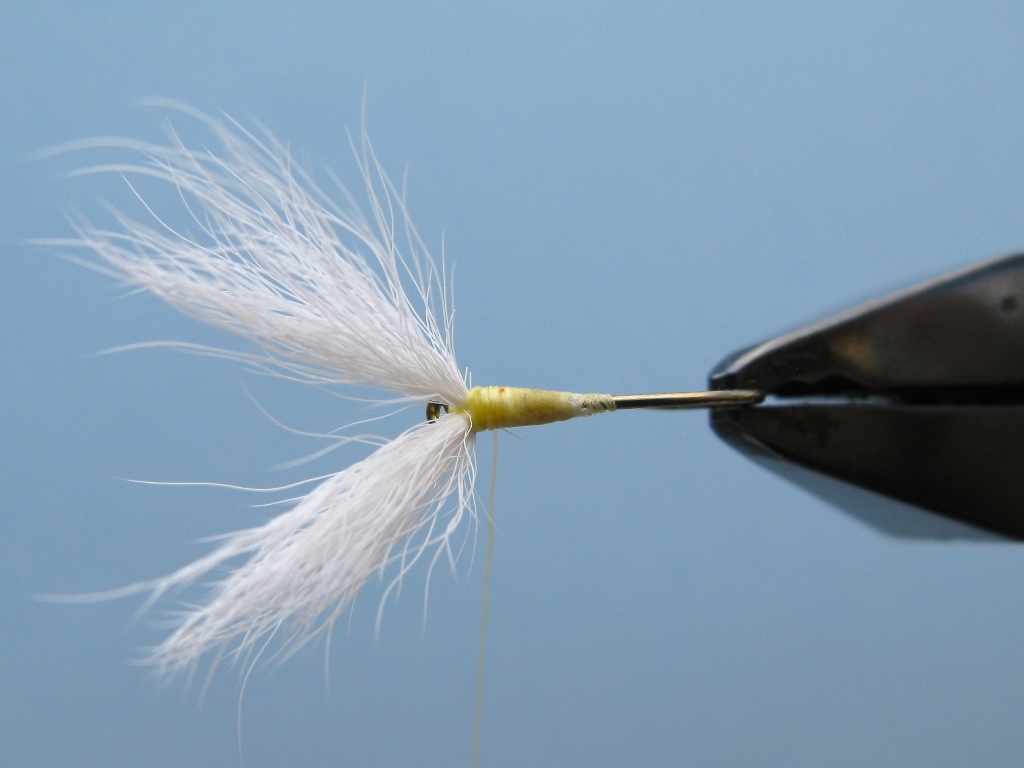
Step Two
Tie in a short tail of the calf hair tying down along the shank.
Dub the thread and form a tapered body two-thirds along the shank leaving space for the hackle. Tie in the hackle feather on it’s back, dull side up, pointing towards the rear of the fly.
Tied in this position with the first turn of hackle you will find the fibres are perfectly sat at 90 degrees to the shank.
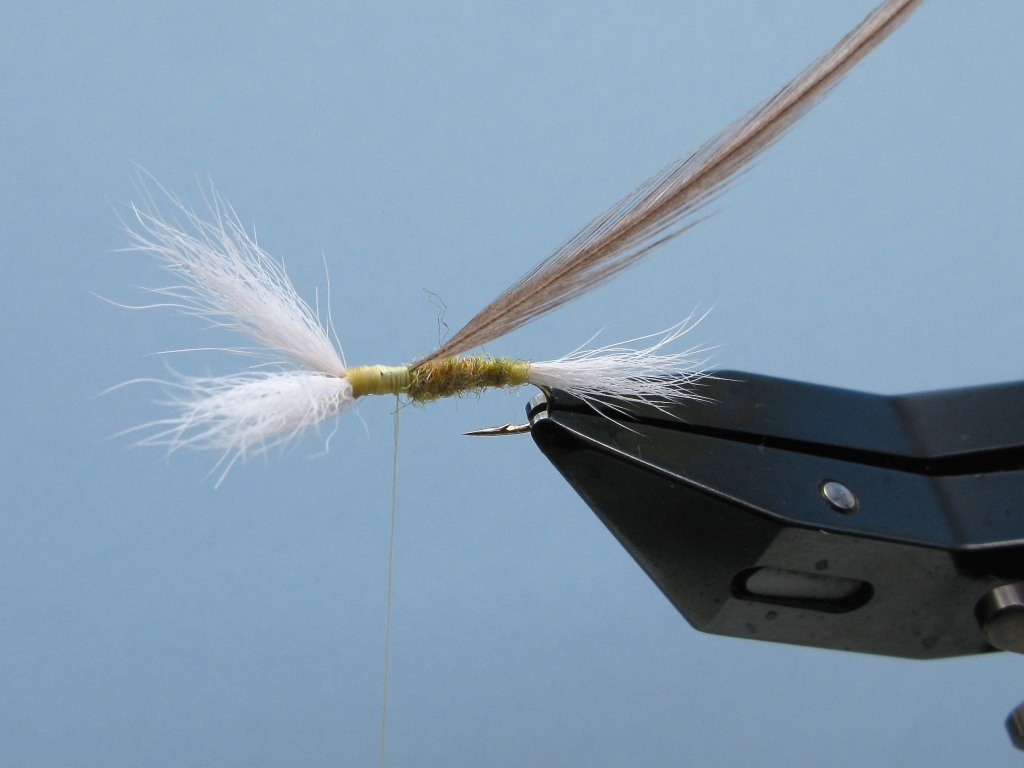
Step Three
Wind the hackle forward in touching turns and secure tightly behind the wing.
Move the thread to the eye, whip finish and apply a little varnish.
Flatten the barb and you’re all set.
